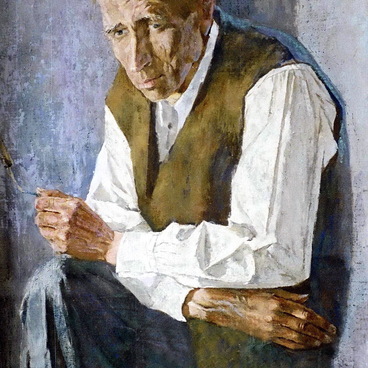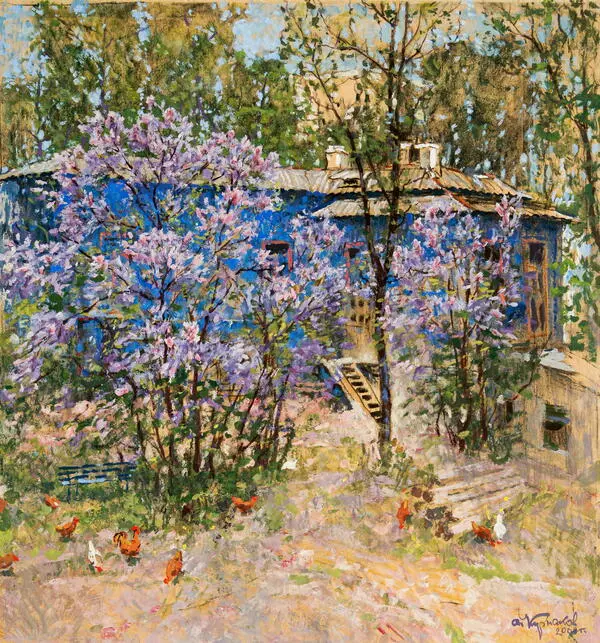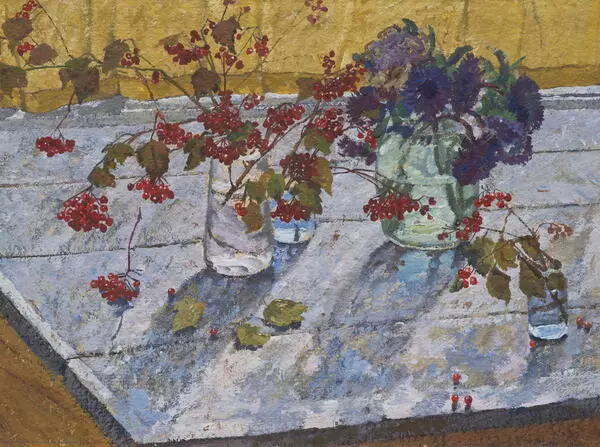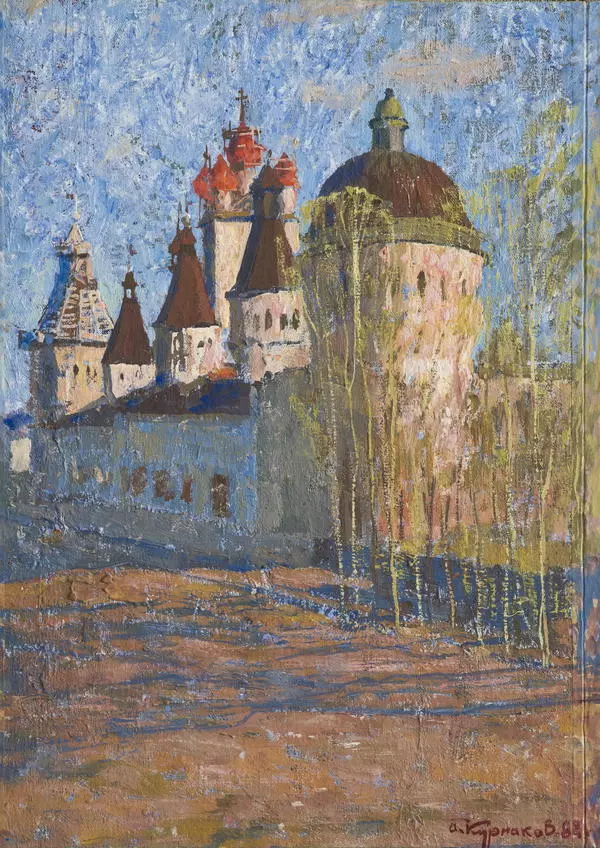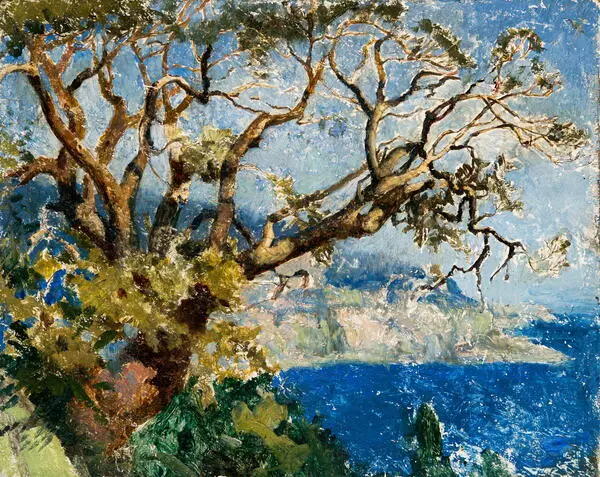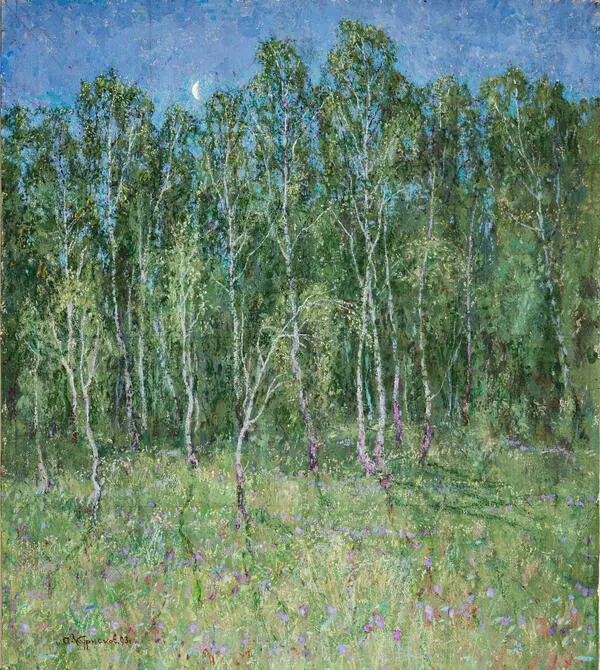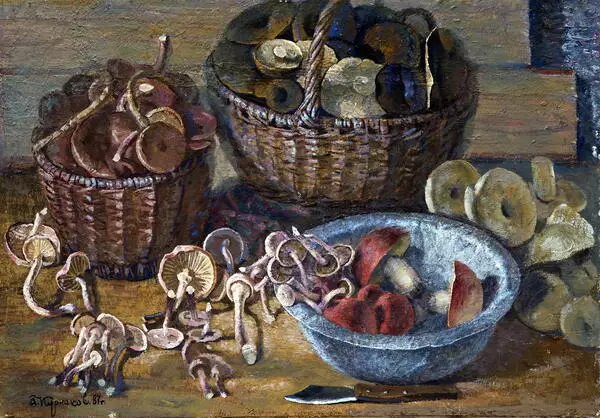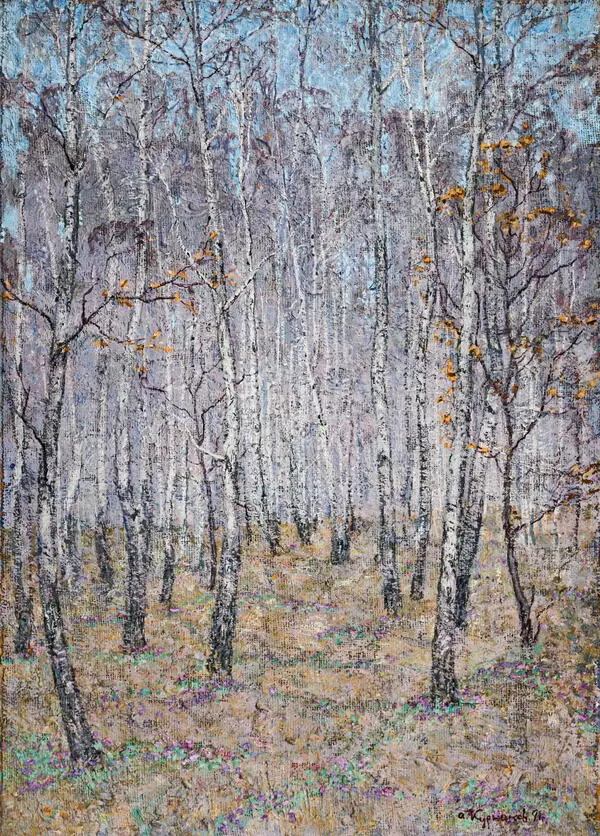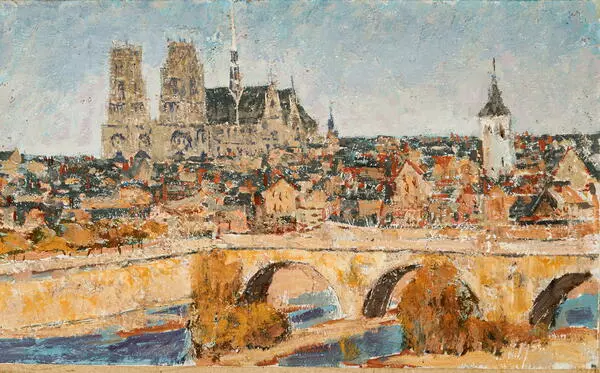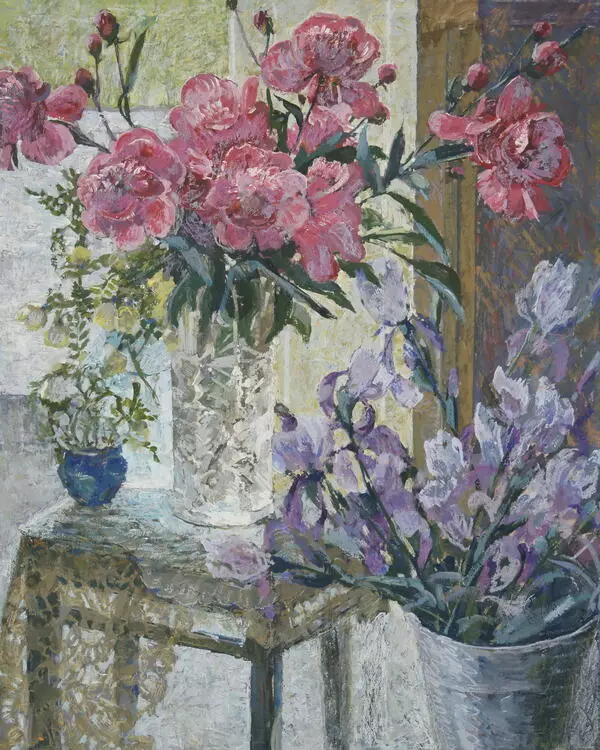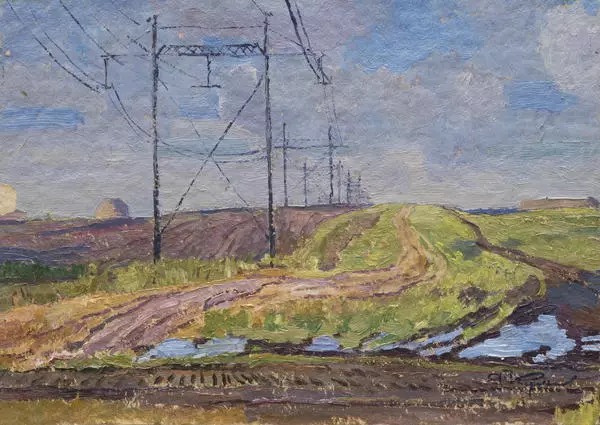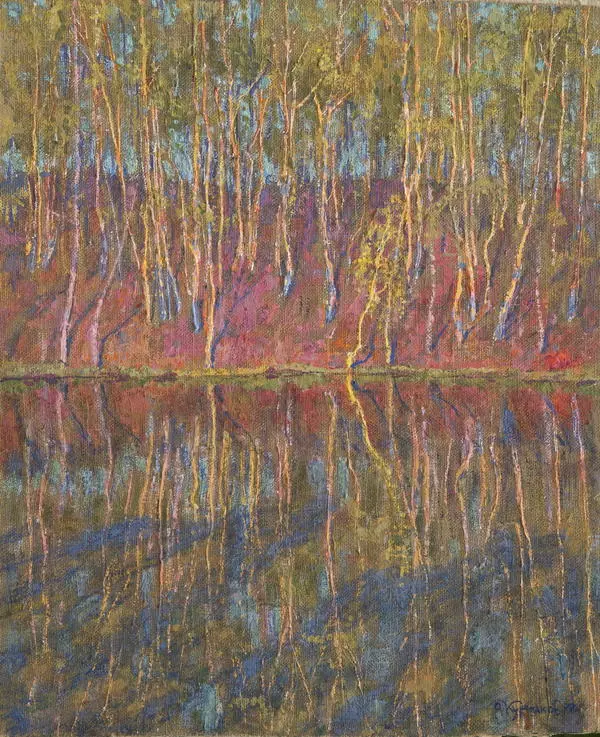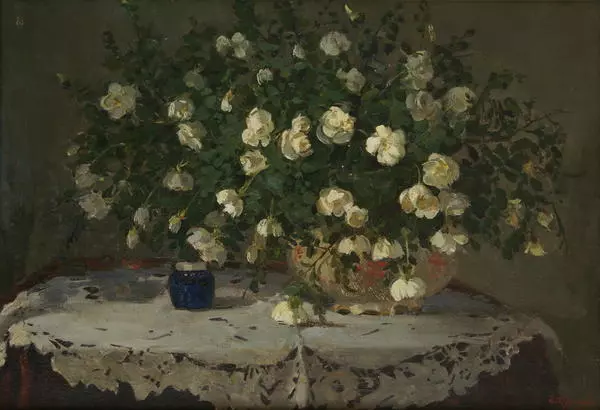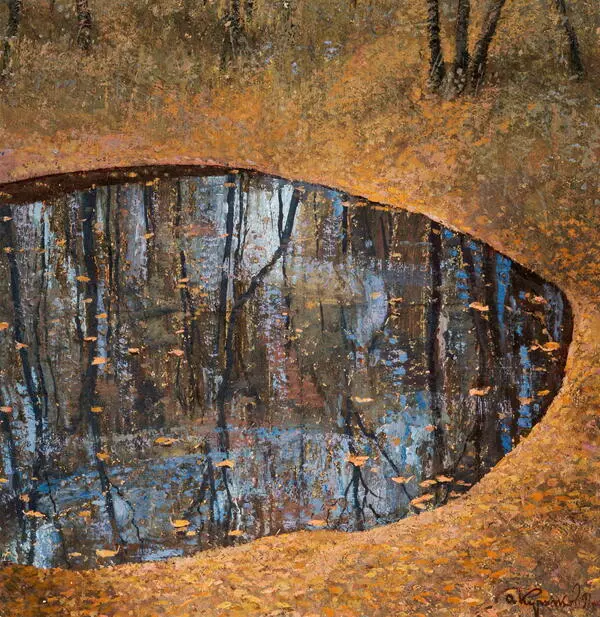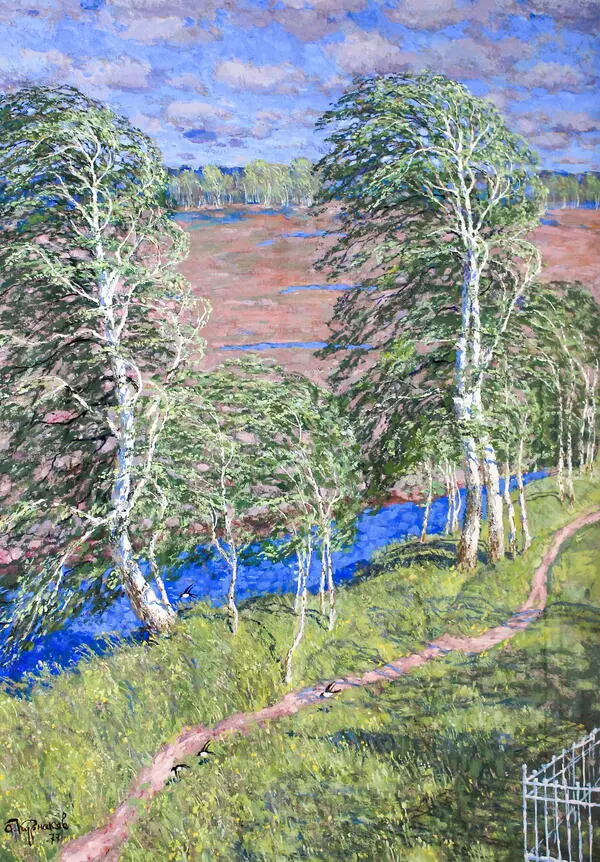The artist and the writer were linked by warm companionship. Andrei Ilyich Kurnakov painted several portraits of Evgeny Nosov. In 1980, the artist created a canvas where he captured Evgeny Ivanovich sitting in an armchair.
In front of is a later portrait of the writer, created in 1988, when the film ‘The Red Wine of Victory’ by director K. Antropov was released based on the story of the same name by Evgeny Nosov.
The portrait was created in the technique of tempera painting. The artist depicted the writer against the background of a spring landscape. We unmistakably recognize the season by the lilac blossoming in the picture’s background. The artist did not paint the figure of the portrayed in full growth and, as it were, broke the large plane of the picture into small mosaic fragments with the help of colored shadows falling from the trees outside the canvas, as if standing behind the viewer.
The focal point of the picture is shifted to the face and shirt collar, which is why we do not see shadows on them. A face with large features is written in detail and expressively. Before us is a middle-aged plump man, hoar-haired, whose broad forehead is carved with deep wrinkles. A penetrating gaze is directed at the viewer, eyes slightly squinted at the sun. His hands are folded behind his back, in which he holds a cane. A half-smile faintly plays on the writer’s face. The coloration of the picture is subordinated to light tones with the use of bluish and lilac shades. We feel the airiness of a space filled with freshness and sunlight on this spring day.
Literary criticism ranked Evgeny Nosov among the writers of ‘village prose’. However, in his best works, readers find not only a narrow peasant understanding of what is happening in their native land, but also a philosophical understanding of the Motherland’s life and history. Evgeny Nosov easily, freely and completely paints pictures of the working village and city factory life, the army retreating in the severe summer of 1941, the people rising to the holy struggle.
After reading the heartfelt poem by Alexander Yashin “Feed the birds in winter”, Evgeny Nosov began to hang bird feeders on the trees every autumn in memory of the poet. And to attract all the inhabitants of his native city to this activity, he pasted leaflets with Yashin’s poem in crowded places.
Evgeny Ivanovich Nosov died on June 12, 2002 and was buried in Kursk on the territory of the Memorial Complex ‘In memory of the fallen in the Great Patriotic War of 1941-1945’. After the writer’s death, the inscription “Feed the birds!” was placed on his monument.
In front of is a later portrait of the writer, created in 1988, when the film ‘The Red Wine of Victory’ by director K. Antropov was released based on the story of the same name by Evgeny Nosov.
The portrait was created in the technique of tempera painting. The artist depicted the writer against the background of a spring landscape. We unmistakably recognize the season by the lilac blossoming in the picture’s background. The artist did not paint the figure of the portrayed in full growth and, as it were, broke the large plane of the picture into small mosaic fragments with the help of colored shadows falling from the trees outside the canvas, as if standing behind the viewer.
The focal point of the picture is shifted to the face and shirt collar, which is why we do not see shadows on them. A face with large features is written in detail and expressively. Before us is a middle-aged plump man, hoar-haired, whose broad forehead is carved with deep wrinkles. A penetrating gaze is directed at the viewer, eyes slightly squinted at the sun. His hands are folded behind his back, in which he holds a cane. A half-smile faintly plays on the writer’s face. The coloration of the picture is subordinated to light tones with the use of bluish and lilac shades. We feel the airiness of a space filled with freshness and sunlight on this spring day.
Literary criticism ranked Evgeny Nosov among the writers of ‘village prose’. However, in his best works, readers find not only a narrow peasant understanding of what is happening in their native land, but also a philosophical understanding of the Motherland’s life and history. Evgeny Nosov easily, freely and completely paints pictures of the working village and city factory life, the army retreating in the severe summer of 1941, the people rising to the holy struggle.
After reading the heartfelt poem by Alexander Yashin “Feed the birds in winter”, Evgeny Nosov began to hang bird feeders on the trees every autumn in memory of the poet. And to attract all the inhabitants of his native city to this activity, he pasted leaflets with Yashin’s poem in crowded places.
Evgeny Ivanovich Nosov died on June 12, 2002 and was buried in Kursk on the territory of the Memorial Complex ‘In memory of the fallen in the Great Patriotic War of 1941-1945’. After the writer’s death, the inscription “Feed the birds!” was placed on his monument.
